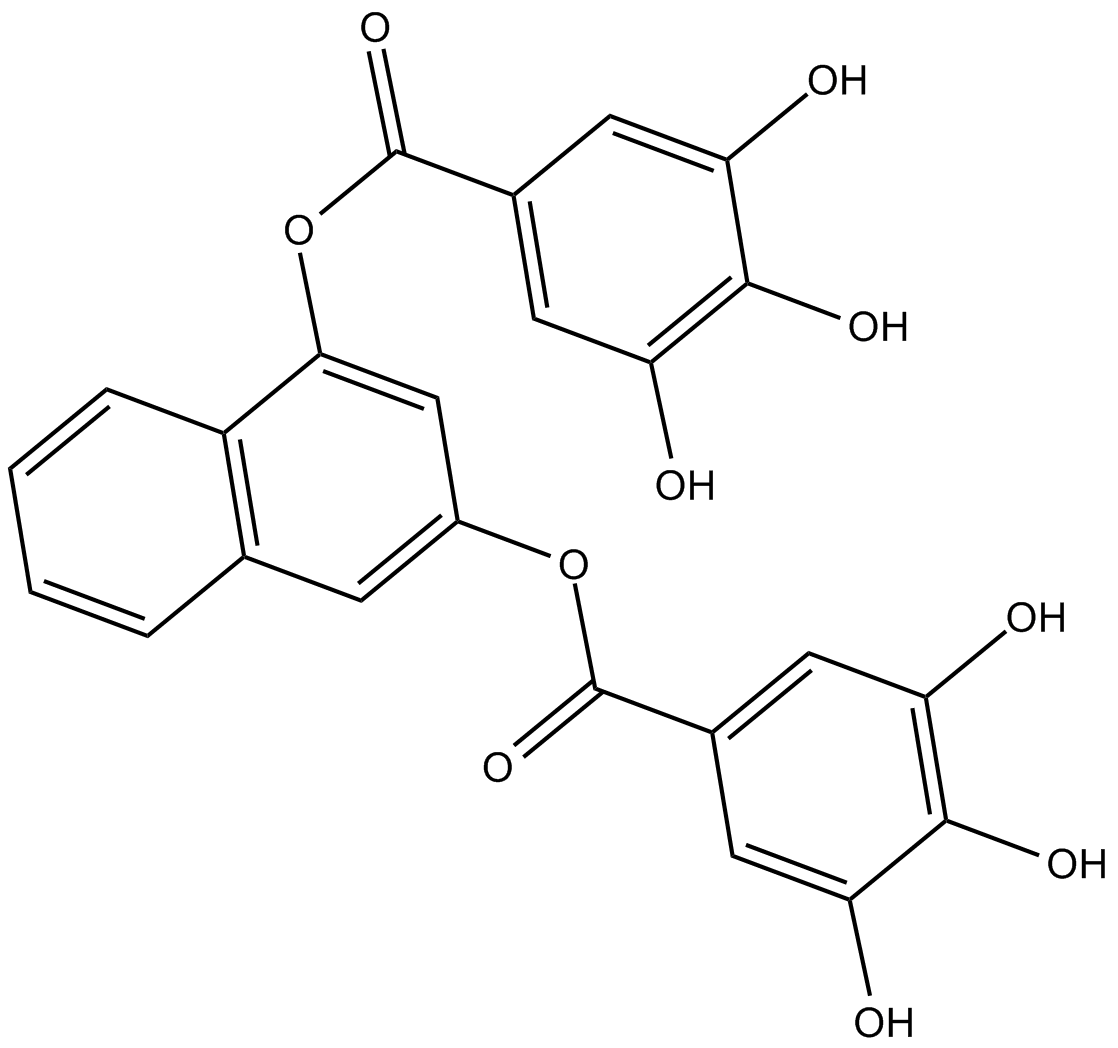UCM05 (Synonyms: G28UCM) |
| Catalog No.GC15091 |
fatty acid synthase inhibitor
Products are for research use only. Not for human use. We do not sell to patients.

Cas No.: 1094451-90-7
Sample solution is provided at 25 µL, 10mM.
IC50: 21 μmol/L for SK-Br3 cells
UCM05 is a fatty acid synthase inhibitor.
Fatty acid synthase, a lipogenic enzyme, catalyzes the de novo synthesis of long-chain fatty acids from malonyl-CoA, acetyl-CoA, and NADPH precursors.
In vitro: In SK-Br3 cells, UCM05 was the most potent derivative with an IC50 value of 21 μmol/L. SK-Br3 cells also showed inhibitary effects towards for MCF-7, and MDA-MB-231 with IC50 values of 46, and 79 μmol/L, respectively. Moreover, the cytotoxic effects of UCM05 was determined in two types of nonmalignant cells, and no significant effects in cell death or morphology was observed using doses up to 60 μmol/L. In addition, the FASN activity decreased time-dependently and the maximal inhibition at 24 hours were 90% for UCM05. Incubation of cells with 30 μmol/L of UCM05 could dramatically decrease the levels of p-HER2 [1].
In vivo: In the BT474 xenograft-bearing mice, the six informative UCM05–treated animals substantially reduced tumor growth when compared with the vehicle-treated control animals. Moreover, one of the UCM05-treated animals had no identifiable residual tumor and one of them died due to traumatic i.p. injections. In addition, no significant weight loss or anorexia was observed after 45 days of treatment [1].
Clinical trial: Up to now, UCM05 is still in the preclinical development stage.
Reference:
[1] T. Puig, C. Turrado, B. Benhamú, et al. Novel inhibitors of fatty acid synthase with anticancer activity. Clinical Cancer Research 15(24), 7608-7615 (2009).
Average Rating: 5 (Based on Reviews and 4 reference(s) in Google Scholar.)
GLPBIO products are for RESEARCH USE ONLY. Please make sure your review or question is research based.
Required fields are marked with *




















